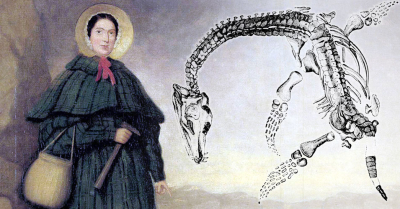
Mary Anning was responsible for unearthing a stunning array of prehistoric fossils in the 19th Century. Her discoveries radically changed the way scientists thought about the history of Earth.
Mary Anning was a fossil collector who made some of the most significant geological discoveries at a time when not much was known about the evolution of Earth and life on it.
Mary was bom in England in 1799 in the sea-side town of Lyme Regis. Mary could hardly attend school as her family was very poor. However, she not only taught herself to read and write but also learned about rocks, soil, anatomy of animals, etc. As a child, she would often go to the seashore with her father to collect shells. Mary learnt fossil hunting and cleaning from her father. After her father's death, she began exploring the rocky hill-ridges along the shore. She had a good eye for the fossils and braved the merciless rocky terrain to unearth a stunning array of prehistoric fossils. The family made a living by selling the 'curiosities' found along the seashore.
Along with her brother, Mary discovered the first complete fossil of ichthyosaurus or fish lizard when she was just 11. Some of her important discoveries include fossils of two giant sea reptiles or plesiosaurs, a flying reptile (pterosaur) and some prehistoric fishes. Mary also discovered that ink from belemnites (squid-like prehistoric creature) can be ground up and used for painting.
Mary Anning soon became famous and was considered an authority on prehistory and geology. Eminent scientists often corresponded with her or came to see her collection of fossils. This is especially noteworthy at a time when women did not enjoy equal status with men. Her discoveries at Lyme Regis, radically changed the way scientists thought about prehistoric life and the history of the earth.
Picture Credit : Google




